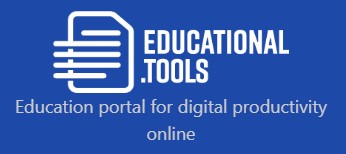Transforming Learning: The Power of Education Tools

Strong 8k brings an ultra-HD IPTV experience to your living room and your pocket.
In the digital age, education tools have become essential for both teachers and students, transforming traditional learning into interactive, engaging experiences. These tools not only enhance the learning process but also cater to diverse learning styles, making education more accessible and effective. Here, we explore various types of educational tools that are reshaping classrooms around the world.
1. Learning Management Systems (LMS)
Learning Management Systems like Moodle, Canvas, and Google Classroom have revolutionized how educators deliver content. These platforms allow teachers to create, distribute, and manage courses online. Students can access resources, submit assignments, and track their progress in real-time. The LMS facilitates collaboration through discussion boards and group projects, fostering a sense of community even in remote learning environments.
2. Interactive Whiteboards
Interactive whiteboards have replaced traditional chalkboards in many classrooms. These digital boards allow teachers to display multimedia content, including videos, images, and interactive simulations. Students can participate directly by interacting with the board, making lessons more engaging. This technology encourages active participation and helps visual learners grasp complex concepts more easily.
3. Educational Apps
With the rise of smartphones and tablets, educational apps have become a popular tool for learning. Applications like Khan Academy, Duolingo, and Quizlet offer interactive lessons, quizzes, and games that cater to various subjects and age groups. These apps allow students to learn at their own pace, reinforcing concepts outside of the classroom and making learning a fun experience.
4. Gamification
Gamification involves integrating game-like elements into the learning process to motivate and engage students. Platforms like Classcraft and Kahoot! use points, levels, and rewards to encourage participation and competition. This approach not only makes learning enjoyable but also fosters a sense of achievement, which can boost students' confidence and encourage them to take ownership of their education.
5. Virtual Reality (VR) and Augmented Reality (AR)
Virtual and augmented reality technologies are making waves in education by providing immersive experiences that traditional teaching methods cannot match. Tools like Google Expeditions allow students to take virtual field trips to historical sites, explore the human body, or even travel through space. AR applications can overlay digital information onto the real world, enhancing lessons in subjects like biology, geography, and history. These technologies cater to kinesthetic learners and those who benefit from experiential learning.
6. Online Collaboration Tools
In a globalized world, collaboration is key. Tools like Microsoft Teams, Slack, and Trello enable students to work together on projects, regardless of their location. These platforms provide a space for communication, file sharing, and project management, helping students develop teamwork and organizational skills that are essential in today’s workforce.
7. Assessment and Feedback Tools
Effective assessment is crucial for student success. Tools such as Google Forms, Socrative, and Edpuzzle allow teachers to create quizzes, surveys, and assessments that provide instant feedback. This immediate response helps educators identify areas where students struggle, enabling them to adjust their teaching strategies accordingly. Furthermore, these tools often include analytics that track student performance over time, allowing for more tailored instruction.
8. Personalized Learning Platforms
Personalized learning tools, such as DreamBox and IXL, adapt to each student's unique
learning pace and style. These platforms use data to create customized learning paths, ensuring that students receive targeted instruction that addresses their individual needs. This approach not only keeps students engaged but also helps them master concepts before moving on, ultimately leading to higher retention rates and academic success.
Conclusion
The integration of education tools into the learning environment is reshaping the way we teach and learn. By embracing technology, educators can create dynamic classrooms that cater to diverse learning styles and promote active engagement. As we continue to innovate and adapt, the future of education looks promising, with endless possibilities for enhancing the learning experience. The right tools can empower both students and teachers, fostering a love for learning that lasts a lifetime.
Note: IndiBlogHub features both user-submitted and editorial content. We do not verify third-party contributions. Read our Disclaimer and Privacy Policyfor details.


